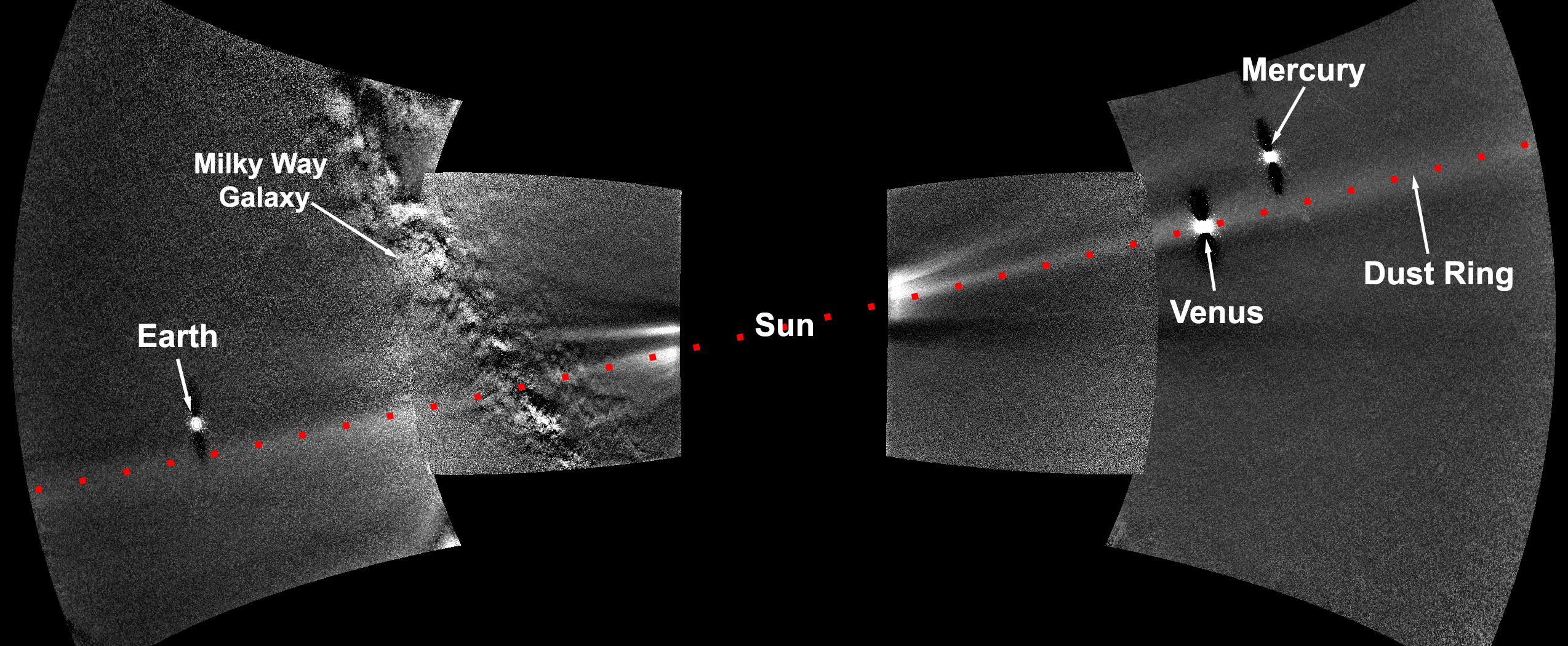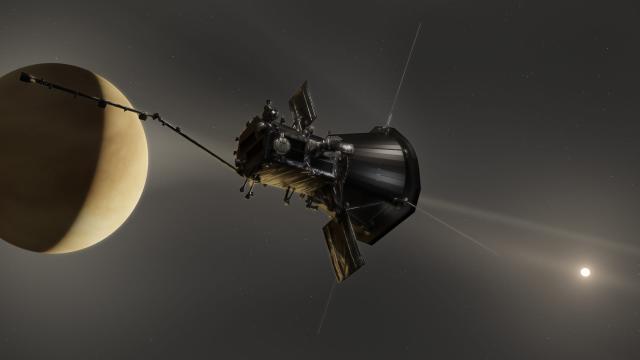A band of dust that follows Venus along its entire orbital path has finally been viewed in full, thanks to a series of fortuitous manoeuvres involving NASA’s Parker Solar Probe.
Astronomers suspected it was there, but now we know it’s real: a band of particles distributed along Venus’s orbital path around the Sun.
Evidence of this circumsolar ring had previously appeared during NASA’s Helios spacecraft mission of the 1970s, and then again during NASA’s Solar Terrestrial Relations Observatory (STEREO) mission from 2007 to 2014. A complete view of this ring had eluded astronomers until now. The Parker Solar Probe has captured the circumsolar ring’s entire 360-degree path around the Sun. A paper detailing this discovery now appears in The Astrophysical Journal.

To date, the Parker Solar Probe has completed seven orbits around the Sun. Equipped with its Wide-field Imager for Solar Probe (WISPR) — a pair of visible light telescopes — the spacecraft has been analysing the Sun’s corona and solar wind. That’s the probe’s primary focus, but mission planners had also planned on using WISPR to study the presumed dust ring.
“This is the first time that a circumsolar dust ring in the inner solar system could be revealed in its full glory in ‘white light’ images,” Guillermo Stenborg, an astronomer from the U.S. Naval Research Laboratory in Washington, D.C., and the lead researcher, explained in a Johns Hopkins statement. “I find that pretty special.”
It was during the Parker Solar Probe’s third sojourn around the Sun, from August to September 2019, that the spacecraft gathered the relevant data. While orbiting at distances from half to one-quarter the distance of Earth to the Sun, WISPR gathered the data as Parker performed a series of rolling manoeuvres to manage the spacecraft’s momentum. Even without these orientation adjustments, WISPR can gather wide-angle images spanning more than 95 degrees, but the different roll orientations allowed for a huge field of view that finally exposed the Venusian orbital ring in its entirety.
“It’s funny that spacecraft operations can sometimes lead to the discovery of new things,” said Nour Raouafi, Parker Solar Probe project scientist and study co-author, in the Johns Hopkins statement. “It’s kind of amazing.”
The team used image processing tools to remove background stars and ambient dust, providing a clear view of the ring. The astronomers also ran tests to make sure it wasn’t some kind of visual artefact. Specifically, they plotted the orbits of objects known to have their own circumsolar rings, namely Earth and a family of asteroids known as the Karin group, in addition to Venus. The bright band detected by WISPR matched up perfectly with Venus’s orbit.
As the new research shows, the dust within this circumsolar ring is approximately 10% denser than the dust in outlying areas. The tiny particles that make up this ring are likely leftovers from the formation of the solar system and/or debris from colliding asteroids and disintegrating comets, as Russell Howard, a co-author of the study and a retired astrophysicist from the U.S. Naval Research Laboratory, explained in the statement.
“One idea is that the dust rings naturally formed from the primordial cloud, but several researchers contend that each planet’s gravity has gradually trapped the particles, perhaps even asteroid or cometary particles within its orbit,” he said.
That said, astronomers still aren’t entirely sure how circumsolar rings form.
The astronomers would now like to improve their estimates of the ring’s density and size. The joint NASA-ESA Solar Orbiter mission could be the tool for the job, as the spacecraft’s orbit takes it high above Venus’s ecliptic plane, providing a unique vantage point from which it can observe the circumsolar ring. These pending observations, along with others, could eventually unravel the mystery of how this orbital ring came to be.
